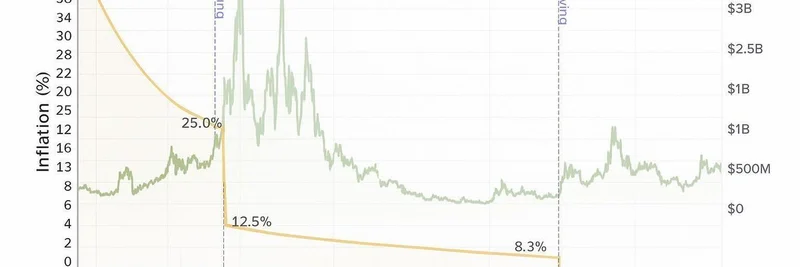In a recent tweet that's sparking discussions across the crypto community, @0xSammy (profile) highlights a puzzling paradox in the blockchain world. Nations are jumping on crypto rails and stacking Bitcoin like never before, while the global financial system integrates AI agents and stablecoins at breakneck speed. Yet, the overall market timeline feels oddly depressed. What gives?
Let's break it down. First, "crypto rails" refers to the underlying infrastructure—like blockchains and protocols—that enable seamless digital asset transactions. Think of them as the tracks for the crypto train. Countries adopting these means they're building or using systems for faster, cheaper cross-border payments and more.
Bitcoin accumulation by nations? That's governments or state entities buying and holding BTC as a reserve asset, similar to how they hold gold. It's a big vote of confidence in crypto's long-term value.
Then there's the integration of "agents + stablecoins." Agents here likely mean AI agents—autonomous software programs that can perform tasks on the blockchain, like trading or managing funds. Stablecoins are cryptocurrencies pegged to stable assets like the US dollar, making them ideal for everyday use without wild price swings. The combo? It's revolutionizing finance, allowing automated, efficient systems that operate 24/7.
But despite all this progress, the "timeline is depressed." In crypto slang, the timeline often means the feed on platforms like X (formerly Twitter), where sentiment and hype drive narratives. Depressed could imply low market prices, lack of excitement, or a bearish vibe hanging over the space.
@0xSammy's tweet quotes his earlier thoughts on AI's explosive growth compared to the DotCom bubble. He argues that AI isn't just another hype cycle; it's a fundamental shift, building on established internet networks for faster adoption. He draws parallels to crypto, suggesting both are part of the next evolutionary phase, with robotics bridging digital and physical worlds.
Remember the DotCom era? In the late '90s, the internet boom led to massive valuations, followed by a crash. But survivors like Amazon and Google became titans. @0xSammy sees AI and crypto following suit—bubbles may form and burst, but the tech endures and dominates.
He mentions Michael Burry, the investor famous for predicting the 2008 housing crash (as portrayed in The Big Short). Burry's bearish on AI, calling it a bubble. But @0xSammy counters that even if there's a pullback, AI and crypto infrastructure will rebound stronger.
Tying this to meme tokens, which are our bread and butter here at Meme Insider: Meme coins thrive on community hype and viral narratives. A depressed timeline means fewer pumps, more rugs, and cautious investors. But with nations adopting crypto and AI agents handling stablecoin flows, the groundwork is set for meme tokens to evolve. Imagine AI-driven meme launches or automated community management— that's where the fun meets function.
Why the depression then? Replies to the tweet offer clues. One user blames macro economic blues, another points to traders getting rekt on Solana memes and shifting focus. Uncertainty looms large, as always in crypto. Humans adapt slower than tech, and market cycles include these lulls before the boom.
@0xSammy's take? It's prime time for builders to hunker down without price action distractions. Sustainable development over hype.
At Meme Insider, we see this as a buying opportunity for solid meme projects with real utility. The integration of AI and crypto isn't slowing down—it's accelerating. Nations stacking BTC signals institutional buy-in, and stablecoins are the bridge to mainstream finance.
If you're in memes, watch for projects blending AI agents with community-driven tokens. The next bull run could be fueled by this synergy, making the current dip a footnote in history.
What do you think went wrong—or is this just the calm before the storm? Drop your thoughts in the comments below, and stay tuned to meme-insider.com for more on how these trends impact your favorite meme tokens.


